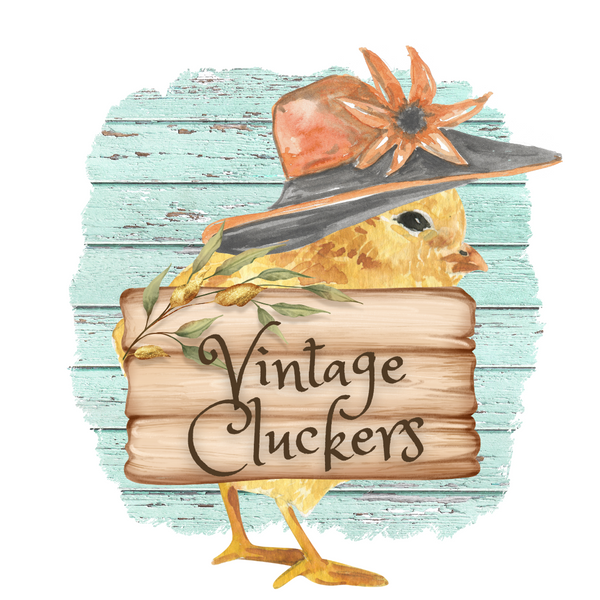Chick Care Guide
Sometimes it's hard to resist those fluffy little peepers we see online or at the farm supply store, but before you hit the "buy" button, you need to be prepared to provide the care chicks need to survive and thrive. What does that mean? Well, keep reading and learn how to be a responsible chicken parent.
Chicks need four essential things to make it to adulthood. Food, Water, Shelter, and Warmth. Ands its not as simple as throwing them in a box with some crumble and water and walking away.
Food: Chicks need access to food 24/7, and you need to watch to make sure they are eating. You can do this by monitoring them, or feeling their crop around midday to see if it's full. Keep in mind, chicks who were just born don't always eat immediately. They absorb the egg yolk while hatching and can sometimes go up to three days before they start actively eating chick starter. If you have brand new babies, you will have to "play mama" and show them how to scratch and peck for food. The easiest way to do this is to grab a paper towel, put it in the bottom of the brooder and sprinkle some chick starter down on it. Then use your finger to "peck" at the crumbles. Once the little chicks start noticing, add the chick feeder nearby and "peck" that too. After they get the hang of it, remove the paper towel and only provide food in the chick feeder. What type of feed is best? Well, there are two options...medicated and non-medicated. We personally NEVER, and I mean never, use medicated feed. But, if you decide you want to then make sure none of your chicks are vaccinated AND make sure you are not feeding medicated feed to Silkies. Silkie chicks should not be fed medicated feed at all. They have slightly different nutritional needs, and medicated feed can actually kill them. When we hatch chicks, we feed them boiled egg yolk food processed with organic steelcut oats for the first 3-5 days, and then we move on to organic chick starter. Make sure you are feeding your chicks actual feed and not grit. We've seen our fair share of new chicken owners accidentally starve their chicks because they thought chick grit was chick feed. Chicks don't need grit until they are about two weeks old, and if you use sand in your brooder, they don't need it at all.
Water: This is pretty self explanatory. All living creatures need water to survive and chicks are no different. Make sure you provide water in a container that the chicks can't drown themselves in. We always use chick specific waterers, but if you only have a bowl available, make sure you fill it with marbles or rocks to prevent drowning. You also need to make sure to keep the water clean. Dirty water can make chicks sick. If you have freshly hatched chicks, or shipped chicks, you will need to show them the waterer by gently dipping the tip of their beak in it when placing them inside the brooder. We personally put a splash of organic apple cider vinegar in the water to help combat pasty butt. If you don't know what pasty butt is, it's when the chick poop gets stuck on their butt and hardens. This prevents them from being able to evacuate and their poop backs up, and eventually (sometimes very quickly) they die. It's important to keep an eye out for this and if you see a chick with stuck poop, grab a q-tip, dip it in warm water, and clean it up, being careful not to pull. If your chick is acting lethargic, put some honey or sugar in the water to give it some energy to recover.
Shelter and Warmth: These two really go together, because wherever you are housing your chicks needs to provide an area to warm up in. You can use just about anything for a brooder. From a cardboard box to that old pack-n-play your human baby grew out of. The most important thing is that its big enough and has proper bedding. We use sand for bedding. It's clean. It's easy. It's cheap. We scoop it like a cat litter box. If you want to use sand too, just make sure its not bleached (no play sand), and doesn't contain silica. We use construction sand, also called multipurpose sand. Other bedding options are large pine flakes, pine pellets, and paper towels. Some people use puppy pads, but we do not because we don't trust the chemicals used in them. We also stay away from fine pine shavings. They can be ingested by baby chicks and cause death. Warmth...Baby chicks need to be kept at about 95 degrees the entire first week of life. Then you gradually decrease temp by 5 degrees each week until you reach ambient temperature, or the chicks are fully feathered. You can provide warmth with a heat lamp, heat plate, heating pad...or any other option online when you search. We use heat plates almost exclusively. No matter what you choose, make sure that your chicks have space to escape the heat if need be. Their little bodies heat up fast, and they need to be able to cool down if they start to overheat.
We hope these basics help you get off to a good start on your journey towards chicken parenthood.
